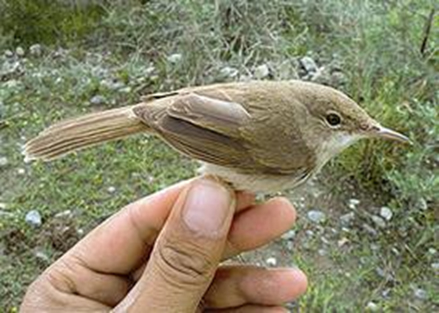What do Bolivia and Afghanistan have in common?
Rather than asking you to make a list of the obvious options (like people, borders, a government), I'll just tell you: both enjoyed positive steps this past week in the field of bird protection.

Birds in decline like these Red-fronted Macaws will be aided by the new protected areas in Bolivia
Credit: Hugo Arnal via ABC Birds
Last week the Bolivian government announced the protection of two new important bird habitats. Covering 500,000 acres, these newly protected areas are of special importance due to the fact that they lie in a unique type of terrain that has historically received little protection. Primarily consisting of dry scrub forest, this transition zone between the high, snow-capped Andes and the lowland moist forests is especially important for several endemic and threatened species, including the Red-fronted Macaw (pictured above), Cliff Parakeet, Bolivian Blackbird, and the Andean Condor. Agriculture and land cleared for cattle and goat grazing is becoming increasingly common in the region, and these new protected areas help maintain the region's ecological balance.
Read more via the American Bird Conservancy >
In Afghanistan, the good news came not in the form of protected areas but in an interesting (re)discovery and subsequent classification.

Large-billed Reed Warbler
Credit: WCS Afghanistan
The Large-billed Reed Warbler was first discovered in India in 1867, but that was the last confirmed sighting until the bird popped up in Thailand in 2006 and was identified and released by ornithologist Philip Round. Once nicknamed the "world's least known bird species" due to the infrequence of sightings and lack of research, Round's rediscovery in Thailand was the only one until American bird expert Robert Timmins found and recorded one specimen in 2008 while cataloging birds in north eastern Afghanistan for the charity USAID.
The bird was spotted again in Afghanistan in June of 2009 when a team of workers from the Wildlife Conservation Society of Afghanistan revisited the site Timmins originally visited. This time, however, they not only spotted one but a whole group of the elusive species. It was concluded to be the first known breeding area for the Large-billed Reed Warbler.
Thankfully, under Afghani law any newly discovered species falls immediately under protected status until a larger and healthier population can be confirmed. Threats to this bird include habitat loss and degredation from wood collection and agriculture.
The Afghani government didn't stop at just one bird, though. On Sunday the government announced 14 other species (including 6 other birds) would be joining the Large-billed Reed Warbler on Afghanistan's Protected Species List, a move welcomed by nature and bird lovers around the world.
Read more via Environmental News Service (wire) >
The newly protected birds are:
Large-billed Reed Warbler, Acrocephalus orinus, Newly Discovered
White-Rumped Vulture, Gyps bengalensis, Critically Endangered
Sociable Lapwing, Vanellus gregarius, Critically Endangered
Eastern Imperial Eagle, Aquila heliaca, Endangered
Marbled Teal, Marmaronetta angustirostris, Endangered
Pallas' Fish Eagle, Haliaeetus leucoryphus, Vulnerable
Dalmation Pelican, Pelecanus crispus, Vulnerable
The newly protected mammals are:
Indian Gazelle, Gazella bennettii, Critically Endangered
Goitered Gazelle, Gazella subgutturosa, Endangered
Bactrian Deer, Cervus elaphus bactrianus, Endangered
Eastern Barbastelle, Barbastella leucomelas (a bat), Vulnerable
Mehely's Horseshoe Bat, Rhinolophus mehelyi, classed as Data Deficient
Stone marten, Martes foina, Data Deficient
Blanford's fox, Vulpes cana, Data Deficient
The newly protect plant is:
East Himalayan fir, Abies spectabilis, Vulnerable

